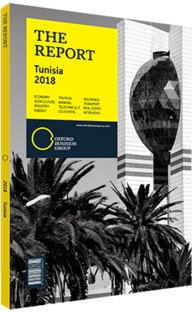Lamia Ben Mahmoud, CEO and Chairman, Tunis Re: Interview

Interview: Lamia Ben Mahmoud
How would you characterise the current state and the evolution of the sector?
LAMIA BEN MAHMOUD: The sector has managed to generate growth and confirm its solvency throughout the difficult economic times following the 2011 revolution. However, since 2012 the sector has seen an annual growth rate of 8%, which is slower compared to pre-revolution times. There has been an agreement among insurance companies to recover the pricing of technical branches, such as fire insurance, which has helped increase revenue. Still, the sector is operating below its potential, accounting for 2% of GDP, which is below the global average. The comparatively low contribution to GDP is explained by the low density of insurance per capita. The average citizen spends less than TD150 (€57.60) per year on insurance, while the global average is around TD600 (€230). As such, there is significant room for growth.
In terms of legislation, the sector has been completely liberalised. Since 2008 foreign investors have received the same benefits as local ones, facilitating the movement of capital. However, several modifications are necessary to update the 1992 Insurance Code, which has been amended but still needs a radical revision. In 2018 the General Insurance Committee is expected to adopt an extensive review of the code to ensure a better framing of the sector. In particular, the code will increase the minimum capital requirement for companies to incentivise smaller firms to merge and consolidate financial solvency. It will also allow other distribution channels to sell insurance, and will establish standards for good governance as well as a legal framework for life insurance to encourage its development.
What are the benefits of growing the life insurance segment, and how can this be achieved?
BEN MAHMOUD: Life insurance can serve as a catalyst for economic development by encouraging good-quality, long-term savings. Life insurance has enormous potential to stabilise the economy. However, similar to both Middle Eastern and African countries, life insurance in Tunisia is limited and only represents 15% of the sector. However, the life segment has grown about 20% per year since 2015, outpacing the sector as a whole. Therefore, we expect life insurance to double its penetration rate and reach 30% of the sector by 2023.
To develop the segment the Insurance Code needs to implement the structural measure of specialisation. If you do a benchmarking across countries, you can see that those with the most-developed life insurance markets also have specialisation in their legal frameworks. Without this structure, life insurance, which encourages long-term savings, is mixed into the same group as insurance products with a shorter duration. Therefore, life and non-life segments should be separated to support this growth.
Furthermore, to disseminate life insurance throughout the market, companies need to adapt the distribution network into the digital era. Products need to keep up with innovation and the demands of the new generation; so life insurance could be sold through mobile apps or online.
Lastly, the government should establish tax incentives to increase the competitiveness of life insurance products. Tunisians are currently unaware of the importance of life insurance; thus, fiscal incentives would make life insurance premiums more attractive to consumers. On top of that, and considering the significant financial crisis of the state’s social security funds, life insurance could serve as an alternative option for many people. For example, this segment could serve as a means of complimentary retirement savings.
In conclusion, the growth of life insurance is a shared responsibility between insurance companies, the public authorities and insurance intermediaries.
You have reached the limit of premium articles you can view for free.
Choose from the options below to purchase print or digital editions of our Reports. You can also purchase a website subscription giving you unlimited access to all of our Reports online for 12 months.
If you have already purchased this Report or have a website subscription, please login to continue.

